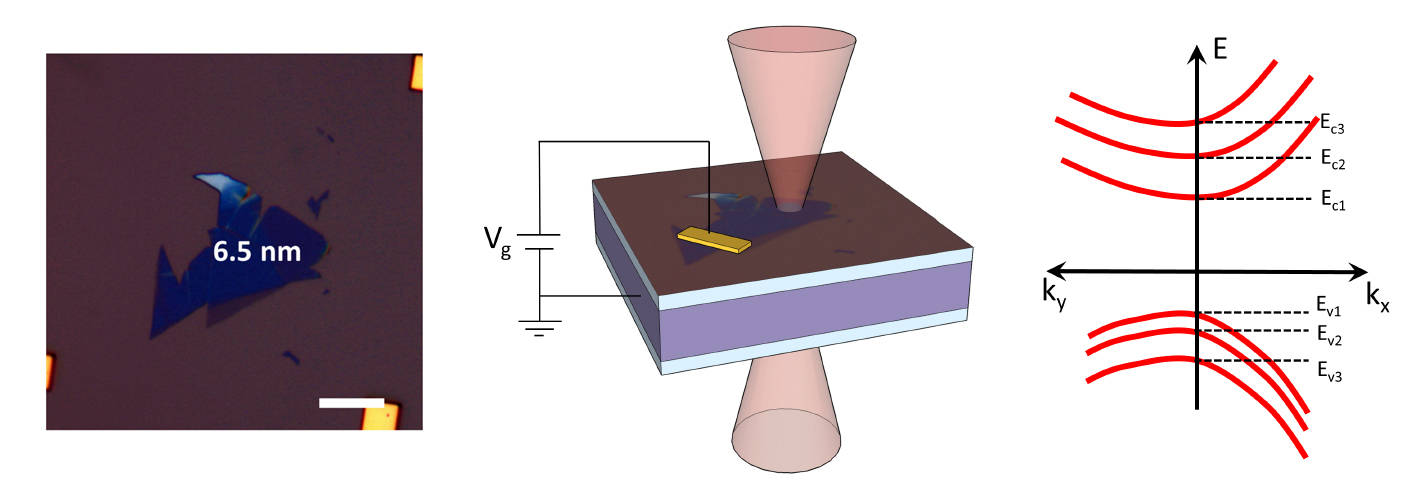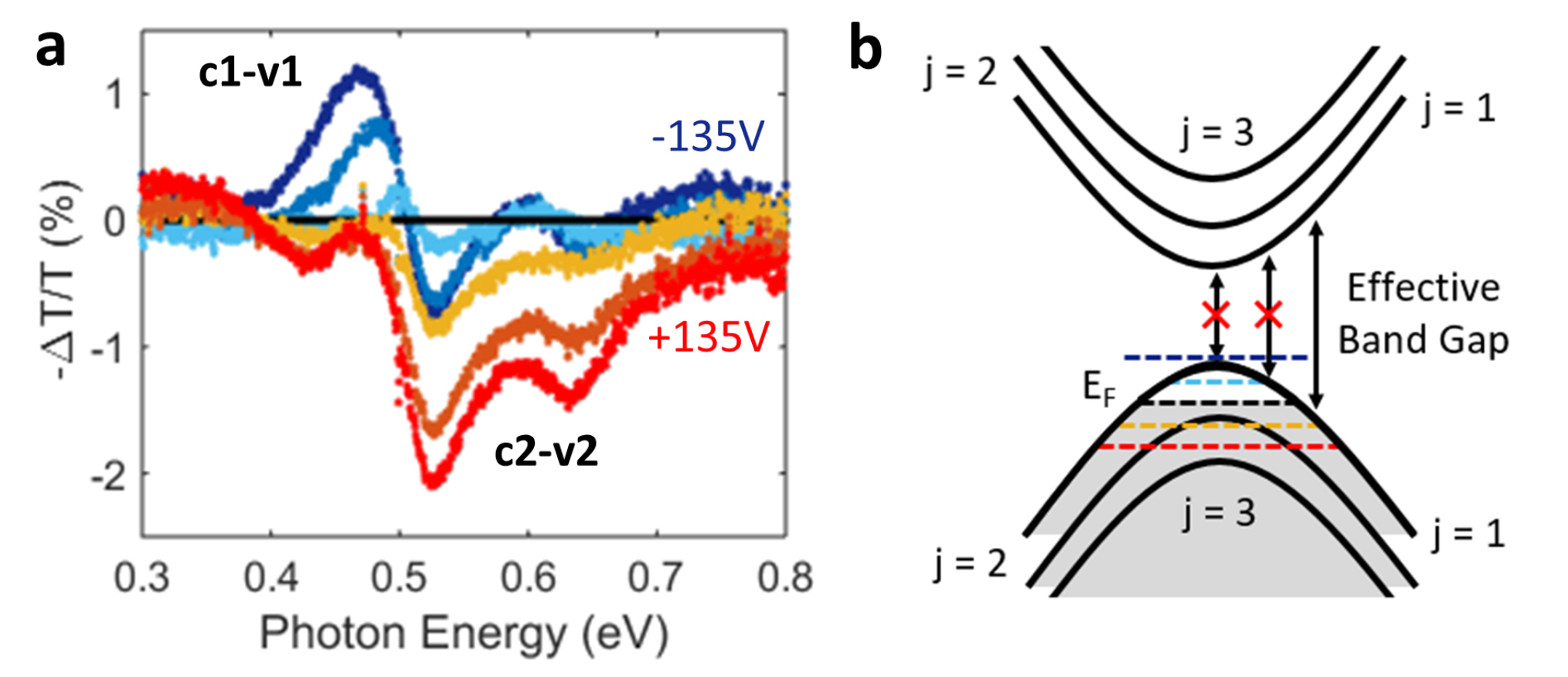The growing family of two-dimensional materials (of which graphene is the founding member) represents a promising new frontier in the field of optoelectronics. Dealing with the electrical modulation of light absorption and emission, optoelectronics is central to applications ranging from photovoltaics to telecommunications. Most progress in this area, however, has been in the visible-light range, with limited relevance to the infrared. Now, at the ALS, researchers from Caltech have measured the infrared transmission spectra of ultrathin samples of black phosphorus under an applied electric field. Their findings suggest that, not only is black phosphorus a promising candidate for tunable mid-infrared optoelectronic devices, it is also an interesting system for exploring the fundamental behavior of quantum-confined charge carriers in two-dimensional semiconductors.

Black phosphorus is a layered, semiconducting material with a band gap that varies from 0.3 eV in bulk crystals to as high as 2 eV in monolayer form. For ultrathin samples (a few layers thick), vertical confinement can give rise to valence and conduction “subbands” that manifest in the spectra as additional oscillatory absorption features due to the introduction of new optical transitions. Moreover, theorists have predicted several strong electro-optical effects in which an applied voltage can dramatically alter the material’s optical properties. For example, in the Burstein–Moss effect, the number of electrons (or holes) increases as a negative (or positive) voltage is applied. As the charge-carrier density increases, they begin to fill the conduction (or valence) subbands, and optical transitions to the filled states are blocked. This manifests in measurements as a decrease in absorption at each subband transition energy. Another example is known as the quantum-confined Franz–Keldysh effect: a strong applied electric-field perturbation yields electron and hole wave functions that “leak” into the band gap, introducing oscillatory features to the absorption spectrum and redshifting the band edge. Until now, these effects had not been observed experimentally.
To clearly measure and interpret these effects, the researchers performed infrared transmission measurements at ALS Beamline 1.4. The use of a synchrotron light source allowed the team to perform their measurements using a high-brightness, diffraction-limited infrared beam, which was advantageous for accurate analysis of the approximately 10- by 10-µm black phosphorus samples. Moreover, the beamline provided a very broadband source, enabling the team to gather information about the samples at a wide range of energies.
The black phosphorus samples were prepared by mechanically exfoliating flakes onto a SiO2/Si substrate. Nickel/gold electrical contacts were attached to the sample by electron-beam lithography and metal deposition, and a thin polymer coating was applied for protection against degradation. Infrared spectroscopy was performed as a function of voltage applied to the flake. This created an effective parallel-plate capacitor between the flake and silicon, leading to the accumulation or depletion of charges.

Under positive bias, the primary sample (initially hole-doped) became increasingly hole-doped, resulting in a Burstein–Moss shift as higher-energy transitions between subbands were blocked. This appeared in the data as an increase in transmittance. Under negative bias, the sample was depleted of holes, and therefore more optical transitions were allowed. This showed up as a decrease in transmittance at the energies of the subband transitions. In other samples analyzed, lighter doping of the flake allowed the first-ever optical measurement of the Burstein–Moss shift for both electrons and holes (an “ambipolar” Burstein–Moss effect). Superimposed upon the Burstein–Moss effect was the quantum-confined Franz–Keldysh effect, which resulted in additional oscillatory features in the spectra at large field strengths.
The results demonstrate the applicability of ultrathin black phosphorus as a platform for optoelectronic modulators at mid-infrared wavelengths. Moreover, while the results verify recent theoretical predictions, they also serve as motivation to further understand the black phosphorus optical response as a function of sample thickness, doping, and field.

Contacts: Michelle Sherrott and William Whitney
Research conducted by: W.S. Whitney, M.C. Sherrott, D. Jariwala, W.-H. Lin, G.R. Rossman, and H.A. Atwater (California Institute of Technology) and H.A. Bechtel (ALS).
Research funding: Resnick Institute, National Defense Science and Engineering Graduate Fellowship, and U.S. Department of Energy, Office of Science, Basic Energy Sciences program (DOE BES). Operation of the ALS is supported by DOE BES.
Publication about this research: W.S. Whitney, M.C. Sherrott, D. Jariwala, W.-H. Lin, H.A. Bechtel, G.R. Rossman, and H.A. Atwater, “Field Effect Optoelectronic Modulation of Quantum-Confined Carriers in Black Phosphorus,” Nano Letters 17, 78 (2017). doi:10.1021/acs.nanolett.6b03362
ALS SCIENCE HIGHLIGHT #351